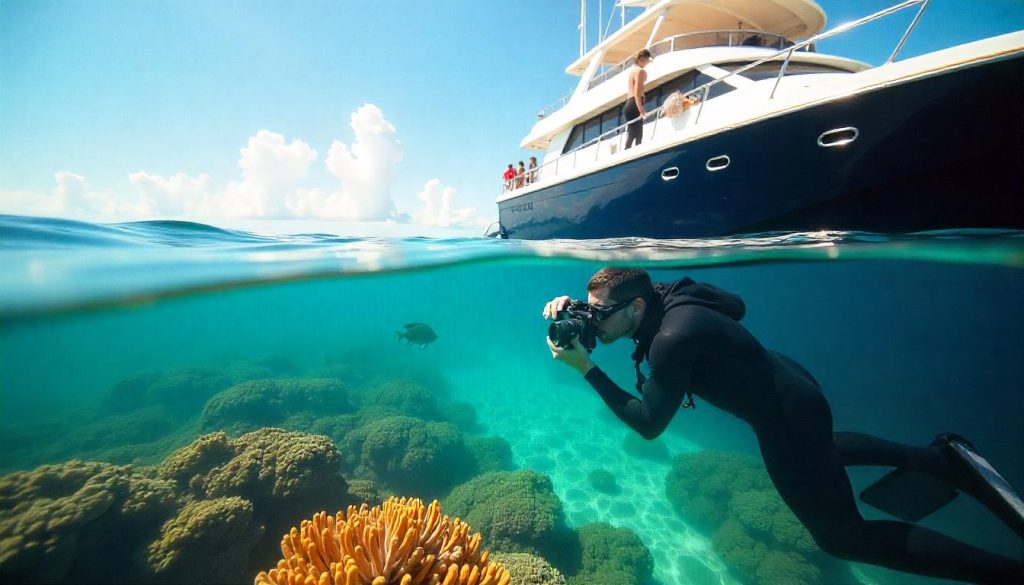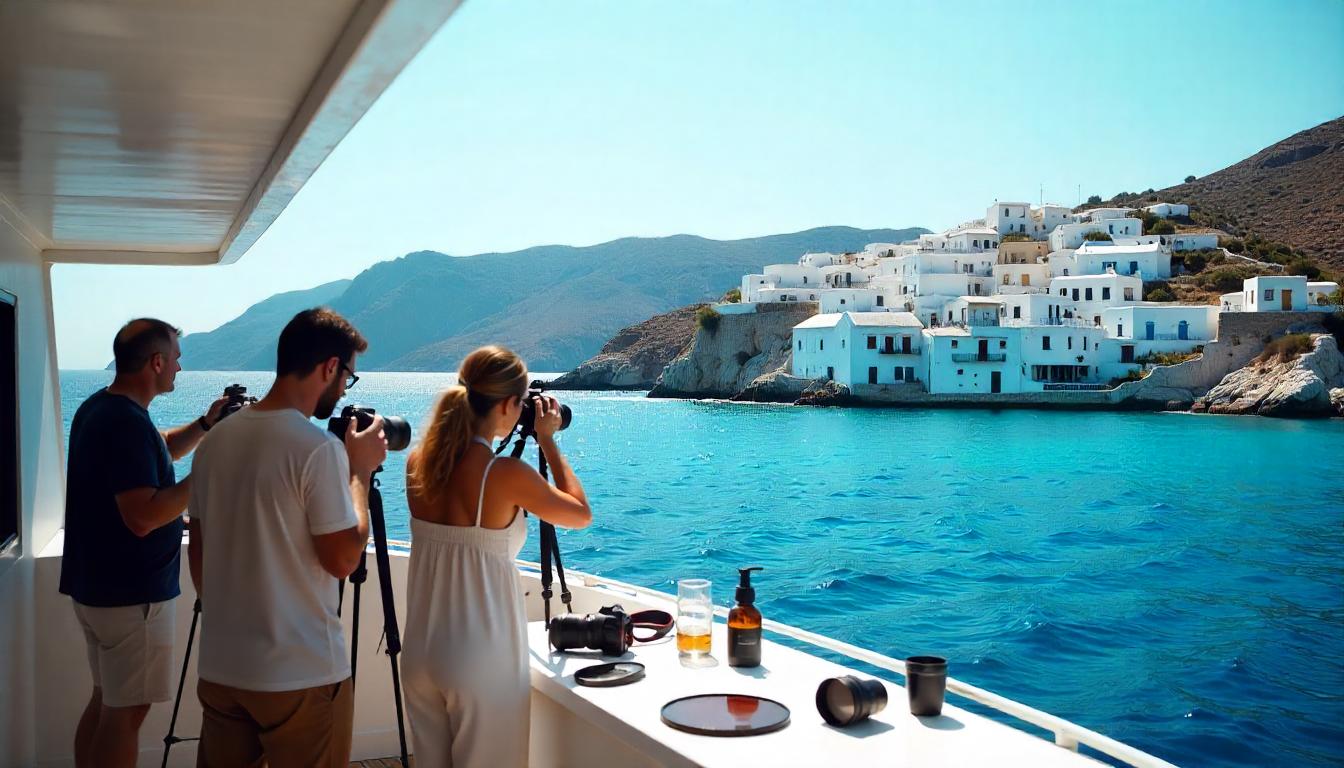Planning a photography workshop yacht experience offers a unique blend of creativity and adventure on the open water. Whether you’re a professional photographer or an enthusiast, hosting such an event in 2025 can inspire participants with stunning seascapes and luxurious settings. This article guides you through the essential steps to organize a successful photography workshop yacht, covering logistics, equipment, and participant engagement.
Defining Your Photography Workshop Yacht Goals
Start by setting clear objectives for your event. Are you focusing on landscape photography, portrait sessions, or underwater shots? For instance, a workshop emphasizing marine wildlife might attract nature lovers. Additionally, decide the skill level of your audience—beginners need basic lessons, while advanced participants may seek advanced techniques.
Consider the duration as well. A weekend trip suits casual learners, whereas a week-long workshop appeals to dedicated photographers. Therefore, aligning your goals with participant expectations shapes the entire planning process.
Choosing the Right Yacht for Your Workshop
The yacht’s size and features determine the workshop’s success. A vessel with ample deck space allows for outdoor shooting and group activities. For example, a 50-foot yacht with a shaded area supports equipment setup and presentations. Moreover, ensure it has cabins for overnight stays if your workshop spans multiple days.
Check for stability and speed, as calm waters enhance photo quality. Larger yachts also accommodate more participants, typically 10-20 people. Consequently, selecting a yacht that matches your workshop’s scale is crucial.
Assembling the Right Photography Equipment
Equipment is the backbone of a photography workshop yacht. Bring a variety of cameras, from DSLRs to mirrorless models, to suit different skill levels. For instance, tripods and filters are essential for capturing steady seascapes. Additionally, waterproof housings protect gear during water-based shoots.
Include lighting tools like reflectors and portable flashes for portrait sessions. Furthermore, ensure spare batteries and memory cards are available, as power sources may be limited onboard. Proper gear preparation ensures a smooth experience for everyone.
Crafting an Engaging Itinerary
A well-planned itinerary keeps participants engaged. Start with a morning session on basic techniques, such as composition and exposure. For example, schedule an afternoon shoot during golden hour to capture stunning sunsets over the water. Moreover, include breaks for meals and relaxation to maintain energy levels.
Plan stops at scenic locations, like coastal towns or secluded beaches, for diverse photo opportunities. Additionally, allocate time for group critiques to foster learning. Consequently, a balanced schedule enhances the workshop’s value.
Ensuring Safety and Comfort Onboard
Safety is paramount during a photography workshop yacht. Equip the yacht with life jackets and safety briefings for all participants. For instance, teach basic water safety before any overboard shoots. Moreover, provide sunscreen and hats to protect against sun exposure.
Comfort matters too. Ensure cabins have adequate ventilation and the galley offers nutritious meals. Furthermore, designate quiet areas for rest between sessions. Therefore, prioritizing safety and comfort creates a positive environment.

Marketing Your Yacht Photography Workshop
Effective marketing attracts the right audience. Use social media platforms to showcase past work and highlight the unique yacht setting. For example, post teaser photos of the planned locations to build excitement. Additionally, partner with photography communities or influencers to expand your reach.
Offer early-bird discounts or group rates to encourage bookings. Moreover, create a detailed website with dates, costs, and inclusions. Consequently, a targeted marketing strategy fills your photography workshop yacht spots quickly.
Managing Logistics and Permissions
Logistics require careful attention. Secure a yacht charter through a reputable company, ensuring it meets your needs. For instance, confirm the crew’s availability and expertise in supporting workshops. Additionally, obtain necessary permits for coastal areas or marine parks.
Plan transportation to the departure point and coordinate with participants on arrival times. Furthermore, arrange insurance to cover equipment and liability. Therefore, smooth logistics prevent last-minute issues.
Engaging Participants During the Workshop
Active participation enhances learning. Start with icebreaker activities to build rapport among attendees. For example, a group photo challenge encourages collaboration. Moreover, offer hands-on sessions where participants practice under your guidance.
Incorporate feedback sessions to review their work and suggest improvements. Additionally, invite a guest speaker, like a local photographer, to share insights. Consequently, engagement keeps the energy high throughout the trip.
Budgeting for Your Photography Session on Yacht
Budgeting ensures financial viability. Estimate costs for the yacht charter, fuel, and crew, which can range from $1,000 to $5,000 per day. For instance, equipment rentals add another $500-$1,000. Moreover, factor in food, permits, and marketing expenses.
Set a participant fee to cover costs and generate profit. Additionally, consider sponsorships from camera brands to offset expenses. Therefore, a clear budget keeps your photography workshop yacht financially sound.
Evaluating Success and Gathering Feedback
After the workshop, assess its success. Collect feedback through surveys to understand participant satisfaction. For example, ask about the itinerary, teaching style, and overall experience. Moreover, review your own performance to identify areas for improvement.
Share highlights, like a photo gallery, with participants to maintain connections. Additionally, use feedback to refine future events. Consequently, evaluation ensures continuous enhancement of your photography workshop yacht.
Conclusion: Setting Sail for Creativity
Planning a photography workshop yacht requires careful consideration of goals, logistics, and participant needs. From selecting the right yacht to engaging attendees with diverse activities, each step builds a memorable experience. As you prepare for 2025, let this guide inspire you to launch a successful event that blends the art of photography with the beauty of the sea.

 Как спланировать фотомастерскую на яхте">
Как спланировать фотомастерскую на яхте">
